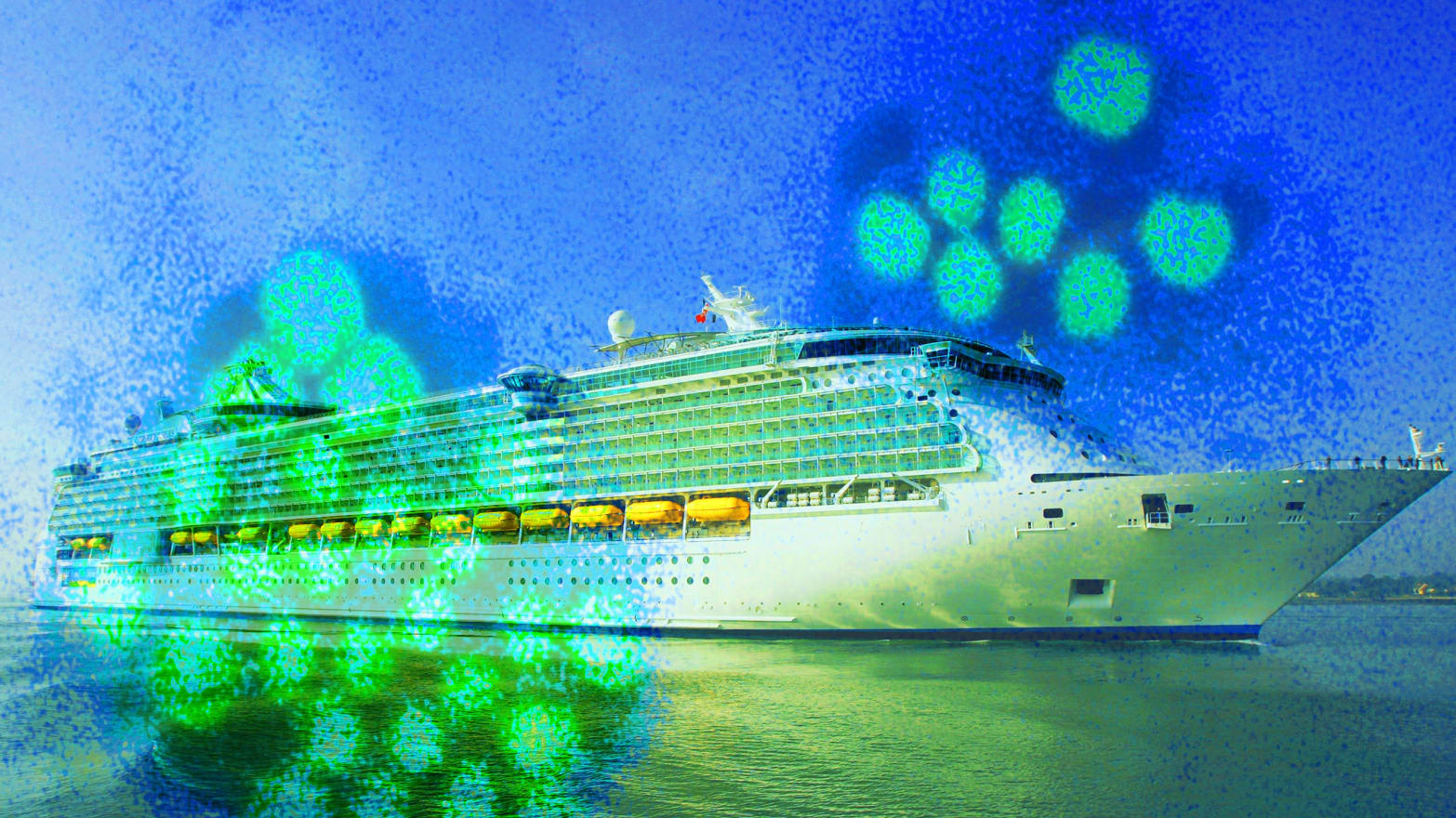As an infectious-disease specialist, I still surprise friends and family with my unworried attitude regarding my risk of catching most infectious diseases. I have cared for patients with highly resistant TB without a pause; I have weathered anthrax and flu and Ebola-is-going-to-kill-us-all-within-the-hour panics with a bored shrug. As infants, my kids ate food right off the floor without washing or boiling. I don’t carry Purell and can’t imagine why any sane person would consider it.
But there is one thing that scares me to death, a single place so threatening, so teeming with contagious organisms that I can’t believe that it is a $36 billion worldwide industry—a place people pay to spend time.
Cruise ships.
So it is with a degree of embarrassed schadenfreude that I read of this year’s first outbreak of the viral infection norovirus on a cruise ship. Norovirus, aka winter vomiting disease, aka 24-hour stomach flu, aka it makes you so sick you will wish you were dead, has a penchant for causing misery starting around this time of year and extending until spring approaches. It rips through nursing homes, daycare centers, families, and hospitals annually, making a rotten time for one and all (though seldom killing anyone). About 300 people of the 23 million who develop the condition die each year. Usually it is only 24 hours of humiliating vomiting and diarrhea, perhaps some low-grade fever—and then, boom, the appetite returns and all is well.
The group at highest risk for severe disease, including death, is the elderly for whom dehydration from vomiting and diarrhea may be catastrophic. Because of this, many state health departments monitor nursing homes very closely.
It also has a close association with cruises and cruise ships. Indeed, the Centers for Disease Control and Prevention maintains a website just to keep track of all the reported outbreaks on cruise ships. In CDC-speak, the problem is filed under the vessel sanitation program (VSP). The outbreaks, listed here by year, are only considered worthy of report if at least 3 percent of the ship becomes ill and reports it to the ship’s crew. That’s a pretty strict definition making it likely that the size of many outbreaks may be underreported.
There usually are eight or nine outbreaks listed, 90 percent of them due to norovirus; the others are typically due to other infectious causes of gastroenteritis. In 2007 though, there were outbreaks reported to the CDC on 21 leisure voyages, including one on the QE-II.
As I wrote two years ago when the norovirus of 2012 started up, norovirus is the persistent pest that it is because ingesting a tiny amount of virus—about 20 virus particles—is enough to cause disease. For most infectious, the amount is 100 or even 1,000 times that. Furthermore, a person with norovirus has about 70 billion viral particles per gram of stool. That’s enough to infect every man woman and child in the world with plenty to spare. And it surely doesn’t take much for one person sick in the bathroom with noro to infect the next bathroom occupant even when very good hygiene is followed.
The current outbreak aboard the Crown Princess has affected 158 of 3,009 passengers and 14 of 1,160 crew members, according to the CDC. Surely there will be more on this ship and on cruises yet to come.
But there will be more cruises, too. The Ebola outbreak, which posed absolutely no risk to the American public, was received as if the plague was at our doorstep and death surely was near. Yet cruise ships, some of which make people ill, are a cash-and-carry-business that remains popular despite real risk. Understanding odds has never been a strength of Homo sapiens. After all, Las Vegas thrives despite the fact that everyone knows that the house always wins. Lotto is propped up by the notion that “Hey, you never know” though of course you do know—you know that you will not win.
By this curiously perverse human logic only one thing is clear: The lower the likelihood of an event—good or bad—the more confident we are that it will occur. And the converse, that the more likely an event, the less sure we are, also is true. In other words, in the world of logic, only the illogical has a chance.

